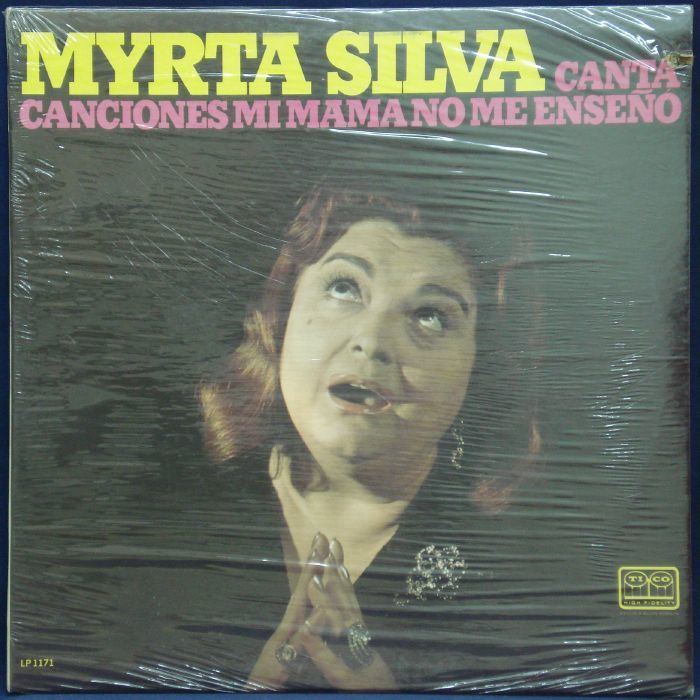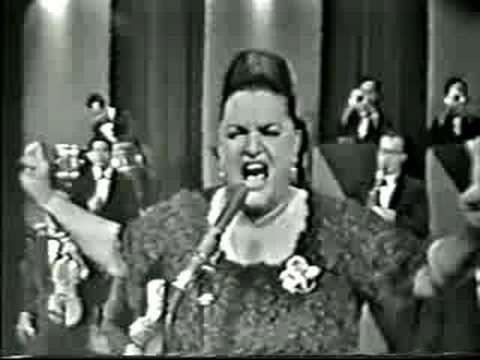Also known as "La Gorda De Oro" Genres Boleros | Name Myrta Silva Role Singer | |
 | ||
Occupation(s) Singer, composer and television producer Albums Cuba's Foremost Rhythm Singer Parents Aureo Silva, Maria Aurelia Olivera Similar People Pedro Knight, Celia Cruz, Daniel Santos, Bienvenido Granda, Bobby Capo | ||
Myrta Silva (September 11, 1927 – December 2, 1987) was a Puerto Rican singer, composer and television producer who was known affectionately as "La Gorda De Oro".
Contents
- Early years
- Singing career
- As a composer
- Madame Chencha
- In New York City
- Una Hora Contigo An Hour with You
- Later years
- References

Early years

Silva was born in the city of Arecibo, Puerto Rico. Her father died when she was six years old and she was raised by her mother, who was her inspiration. Silva and her fans referred to her mother as "Mama Yeya". In 1937, Silva made her first public presentation at the Oliver Theater in Arecibo. In 1939, Silva and her mother moved to New York, where she started a career in radio, theater and musical plays.
Singing career

Silva was working in a cabaret when she was discovered and offered a 10-year contract by RCA. In the late 1930s, she met the Puerto Rican composer Rafael Hernández, who convinced her to join his Cuarteto Victoria. Myrta traveled with the group all over Latin-America. Some time later, she also sang for another composer Pedro Flores in his Sexteto Flores, where she was joined by Daniel Santos and Pedro Ortiz Davila (aka "Davilita").
As a composer

In 1941, Silva composed her first song, "Cuando Vuelvas" ("When You Return"), recorded by Ruth Fernández. In 1942, she composed "En Mi Soledad" ("In My Solitude"), recorded by Daniel Santos, which became a hit in Latin America and in the Latin communities in the United States. In 1944, she wrote "Asi es la Vida" ("That's Life") and "Facil de Recordar" ("Easy to Remember") while she was performing in Havana, Cuba.
Silva had become an international singing star and was known as "The Queen of the Guaracha" by her fans in Latin America. From 1949 to 1950, she was the lead singer in the legendary Cuban guaracha group, La Sonora Matancera, at the same time continuing to compose. She received a good deal of recognition for her groups' performances throughout Latin America. In Argentina, she was named the "best-selling artist" in that country. In 1950, she was proclaimed by the Cuban government "The Most Popular Artist". When she decided to leave the group she was replaced by Celia Cruz, a young school teacher turned singer who went on to become known as the "Queen of Salsa".
Madame Chencha
In 1956, Silva produced and transmitted from New York a television program, Una Hora Contigo (An Hour with You). The show was transmitted by Canal 4 in Puerto Rico and Myrta moved back to the island. In her show she created the innovative character of "Madame Chencha". "Madame Chencha" became the first T.V. character dedicated to "rumors". This character created a lot of controversy between public figures and the television station, and as a consequence, Silva decided to leave the program and return to New York City.
In New York City
In New York City, she composed "Puerto Rico del Alma" ("Puerto Rico of my Soul"). Between 1962 and 1964, she composed the following hit songs: "Que Sabes Tu" ("What do you know?"), "Tengo que Acostumbrarme" ("I Have To Get Used To It"), "Juguetes del Destino" ("Toys of Destiny"), and many others. Among her recordings are Voces Romanticas de Puerto Rico (Romantic voices of Puerto Rico), La Bombonera de San Juan (The Bombonera of San Juan) and La Compositora E interprete (The Composer and Interpreter).
Una Hora Contigo (An Hour with You)
During the mid 1960s, Silva hosted a weekly music variety TV show Una Hora Contigo (An Hour with You) on New York City's first Spanish language television station, WNJU-TV Channel 47. The program was hugely popular among the Latino audience, prompting the station to add an additional weekly program hosted by Silva titled Tira y Tapate.
In the 1970s, Silva wrote "No Te Vayas de Mi Vida" ("Stay In My Life") which was recorded and made popular by Evelyn Souffront. In 1971, Silva returned to Puerto Rico with her television show Una Hora Contigo which this time was transmitted on Canal 11. This show was among the most popular programs in Puerto Rico.
Later years
Silva was active in many charities and she also participated in many pro-Hispanic activities in the US. During the 1980s, Silva had a program in the government television channel dedicated to music and composers.
Silva suffered from senility or Alzheimer's disease in her last years. One day while showering, she accidentally scalded herself with the hot water and suffered third degree burns. Silva died on December 2, 1987, in Arecibo, aged 60 and was buried in "Cementerio Antiguo de San Juan" (old San Juan Cemetery) in San Juan, Puerto Rico.
